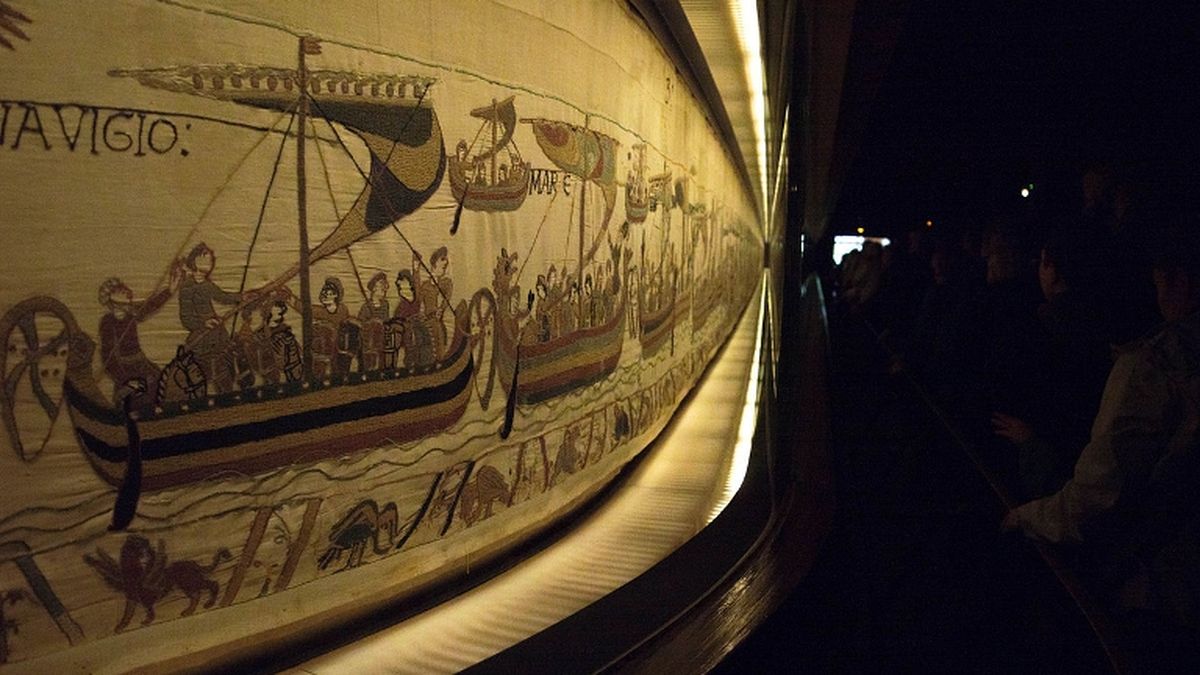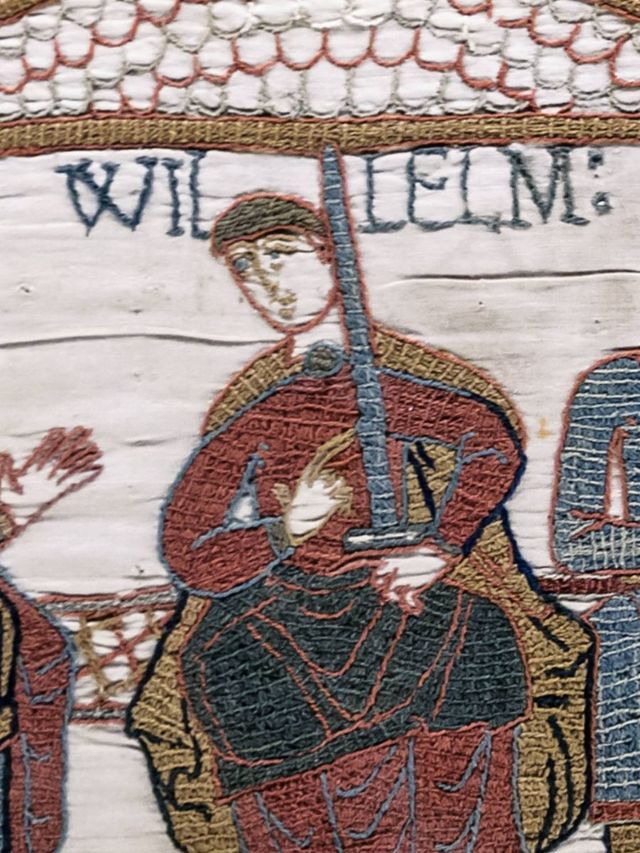 The tapestry | ©Supercarwaar / CC-BY-SA
The tapestry | ©Supercarwaar / CC-BY-SABayeux houses a medieval masterpiece, a real treasure, the famous tapestry! For that matter, the exact word is embroidery, not tapestry...
The legend tells us it was completed by William the Conqueror's wife, Matilda. Nowadays we think it's William's brother, Odo, who ordered it in order to decorate his Norman cathedral of Bayeux.
We can see Odo's portrait on the tapestry...
Completed between 1066 and 1100, our masterpiece was hung in Bayeux cathedral on July 1077.
It was called "Duke William's outfit" or "Conquest' tale" and it deals with conquest of England by Normans in the 11th century.
The artists used 8 colours (red, yellow, orange, black, pale and dark blue, pale and dark green).
We can see 72 scenes with 623 people, 202 horses, 55 dogs, 37 buildings, 41 boats, 46 trees and more than 500 different animals!
The first mention of our tapestry dates back to 1476, in a cathedral's inventory: "a very long hanging with embroidery and writings, representing England's conquest".
In 1563, it was mentioned as "embroidery canvas".
Did you know our tapestry nearly disappeared during the Revolution? Soldiers wanted to cut it into pieces in order to pack up their things!
Napoleon I sent it to Paris, then it was sent back to Bayeux city: in 1839, they built a special museum to display it.

